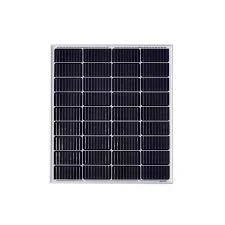hybrid inverter
Understanding Hybrid Inverters A Comprehensive Guide
In today’s world, where energy efficiency and sustainability are paramount, hybrid inverters have emerged as a critical component in the renewable energy landscape. These innovative devices play a vital role in harnessing energy from various sources, integrating them seamlessly to provide a reliable and flexible power supply. This article delves into the workings, advantages, and applications of hybrid inverters.
What is a Hybrid Inverter?
A hybrid inverter is a device that combines the functionalities of both a traditional inverter and a charge controller. It is designed to convert direct current (DC) electricity generated by renewable energy sources, such as solar panels or wind turbines, into alternating current (AC) electricity used in homes and businesses. In addition to this primary function, hybrid inverters can also manage energy storage systems, allowing users to store excess energy generated during peak production times for use when energy demand is high or when generation is low.
How Hybrid Inverters Work
At the core of a hybrid inverter is its ability to manage multiple energy sources. Typically, these systems are connected to both a renewable energy source (like solar panels) and a battery storage system. During the day, when production is at its peak, the inverter can distribute power to the electrical load of the home while simultaneously charging the battery. If the batteries are fully charged, excess power can be fed back into the grid, or used to power other appliances.
When the sun sets or energy demand skyrockets, the hybrid inverter draws energy from the batteries, ensuring a constant power supply. This capability allows users to rely less on grid electricity, leading to potential cost savings and increased energy independence.
Benefits of Hybrid Inverters
1. Energy Efficiency Hybrid inverters maximize energy usage by intelligently managing the flow of power between solar generation, battery storage, and household consumption. This ensures that as much of the generated energy as possible is used on-site rather than wasted or sold back to the grid at a low price.
hybrid inverter

2. Cost Savings By reducing reliance on grid electricity and optimizing energy use, homeowners can significantly lower their electricity bills. The ability to store energy for later use adds an additional layer of savings since users can consume stored energy during peak pricing hours.
3. Backup Power In the event of a power outage, hybrid inverters can be configured to provide emergency power from the battery storage. This feature is particularly valuable for areas prone to unreliable grid electricity.
4. Scalability Hybrid inverter systems can be easily scaled up or down. Users can start with a smaller solar array and battery system and expand as their energy needs grow or as financial circumstances allow.
5. Sustainability By promoting the use of renewable energy, hybrid inverters contribute to a reduction in carbon footprint and the overall transition towards a more sustainable energy system.
Applications of Hybrid Inverters
The applications of hybrid inverters are widespread and versatile. In residential settings, they provide homeowners with energy independence and cost savings while contributing to a greener environment. In commercial and industrial sectors, hybrid inverters facilitate large-scale energy management, allowing businesses to optimize energy costs and ensure reliable power supplies.
Additionally, they play a crucial role in microgrid systems, especially in remote areas where access to the central grid is limited. Here, hybrid inverters enable localized energy generation and storage, utilizing available renewable sources while enhancing energy security.
Conclusion
Hybrid inverters represent a significant advancement in energy technology, offering a flexible and efficient solution to energy management challenges. As more individuals and businesses recognize the importance of renewable energy and the benefits of energy storage, the adoption of hybrid inverters is expected to grow. Embracing this technology not only promises economic advantages but also plays a pivotal role in creating a sustainable energy future for all.
-
String Solar Inverter: The High-Efficiency Solution for Smart Solar EnergyNewsJul.14,2025
-
Revolutionizing Rooftop Energy with the Power of the Micro Solar InverterNewsJul.14,2025
-
Power Independence with Smart Off Grid Solar Inverter SolutionsNewsJul.14,2025
-
On Grid Solar Inverter: Powering the Future with Smart Grid IntegrationNewsJul.14,2025
-
Monocrystalline Solar Panels: High-Efficiency Power for the Future of Clean EnergyNewsJul.14,2025
-
Bifacial Solar Panel: A Smarter Investment for Next-Generation Energy SystemsNewsJul.14,2025







